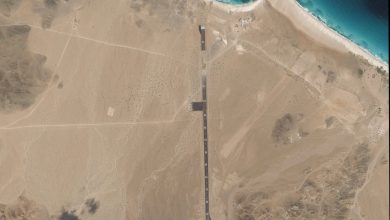Taiwan taps satellite hookups to help down invading drones

MILAN — The Taiwanese military is testing a satellite-connected setup of drone countermeasures as part of a massive effort to bolster the island’s defenses of critical infrastructure and core communications network amid an uptick in Chinese probing.
The tests come as Taiwan is seeing Chinese military activity in the waters around the island, including drones flying within the country’s air defense identification zone. China views Taiwan as a rogue province and has threatened to take it back by force.
Tron Future, a Taiwan-based company, has been supporting the government in integrating counter-drone systems with Taiwan’s low Earth orbit (LEO) satellites through its T.SpaceRouter user terminals, expected to boost the island’s wartime communication resilience.
The T.SpaceRouter is a lightweight satellite communication terminal that uses active electronically scanned array (AESA) technology, envisioned to double as a kind of communication antenna relying on regional private 5G coverage.
“As our anti-drone systems will be able to connect with LEO satellites by the end of 2025, each C-UAS installation site can serve as a regional military communication hub with LEO satellite backbone – this will help prevent systemic collapse of the core communication network in potential future conflicts,” Dr. Yu-Jiu Wang, chief executive of Tron Future said.
The Taiwan Space Agency has launched an experimental satellite project dubbed Beyond 5G, which aims to develop two high-performance LEO spacecraft that will be deployed at an altitude of 600 kilometers.
Last year, Wang told Defense News that at the height of tensions, the company’s radars deteced as many as 100 Chinese surveillance drones above the island in the span of a week.
According to the vendor, the Taiwanese military also recently began testing a variety of counter-drone active and passive radars, including Tron Future systems, as well as jammers.
These include achieving at least a 6 kilometers effective detection range for drones over the sea, with one of the target references being a Mavic 3 Pro, for active and passive radars, and at least a 4 kilometer effective jamming capability for drones, Wang said.
The government is expected to sign a contract with the winning contractor within two months as part of an order that could total tens of millions of dollars.
“A total of 26 sets of anti-drone systems need to be installed, with 13 sets to be completed within five months after signing the contract, and the entire procurement to be completed within 10 – the systems will be installed on the frontline islands closest to China,” the CEO said.
He noted that the closest distance from Taiwan’s outer islands to China is roughly 2 kilometers.
Taiwan is a major producer of computer chips, which means the country’s semiconductor factories are assumed targets in a potential Chinese attack besides military sites.
Elisabeth Gosselin-Malo is a Europe correspondent for Defense News. She covers a wide range of topics related to military procurement and international security, and specializes in reporting on the aviation sector. She is based in Milan, Italy.
Read the full article here






